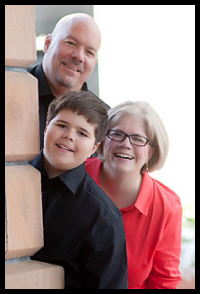My phone number is (406) 696-4435, but you really should read this page first if you’re interested in lessons. Guitar lessons is a very detailed thing, and it deserves some careful attention from the beginning!

I offer guitar lessons for children and adults, and am equally as comfortable with both. I currently teach at the beginning level only, taking the student through the method book shown below. Guitar is a great instrument that you can enjoy all your life. And you can also use it to bring joy to others. For me, teaching guitar is fun for both these reasons!
If you’re thinking about lessons for you or your child, please read this page through carefully, and then contact me with any further questions, or to set up a time for your first lesson.
Fees
$24 for a 30-minute lesson.
$36 for a 45-minute lesson.
$48 for a 60-minute lesson.
The Method Book

I use the Hal Leonard Complete Edition Guitar Method, which I love for how it teaches the player to read standard music notation—starting from the first lesson— and mixes reading and playing together.
This is an excellent approach, as a great many guitarists have learned guitar informally, by mimicking friends or from using various shortcut methods of notation. While these other methods can certainly be entertaining right away, the downside is the age-old story that they player who didn’t learn to read music from the beginning rarely stops later to go and learn it. And this may frustrate the player for a lifetime—even though basic reading skills only take a few weeks to learn.
So why not do it right from the start?
Whether you want to end up on classical guitar, folk guitar, or electric, this method will give you the firm foundation you need.
What Will I Learn?
You’ll learn, among other things:
- The names of all the guitar parts
- How to tune the guitar
- How to read notes in standard musical notation
- How to play a melody from a songbook
- How to strum chords along with a melody
- How to finger notes and chords
- How to keep a steady beat
- How to play with a pick or with your fingers/fingernails
- Various strumming patterns
- Various musical styles
- Various musical scales
Beyond the nuts and bolts above, however, what you’re really doing in this course of study is this: You’re becoming a musician. You’re learning and practicing and experiencing an art that millions of humans have experienced before you, and that millions will experience after you’re gone. You’ll learn to think beyond the basics of pitch and rhythmic values, into the philosophical and aesthetic realm of “what makes it art?”. I, for one, find that I’m a better person when I’m caring about such things. And maybe you’ll come to that same conclusion about yourself.
About Personal Growth in Music Lessons
Please also read my short article here: About Personal Growth in Music Lessons. It’s about the three most common cognitive/emotional struggles that music students seem to have.
At Your Own Pace
One great thing about this method of teaching is that the student can progress at his or her own pace. The good teacher, of course, will always press the student to keep practicing at home as much as is practicable, but every student’s availability is different, just as is every student’s learning speed.
Lesson Length
The ideal lesson length depends normally on these three variables:
- Attention span
- Schedule availability
- Funding
As a general rule, the younger the student, the shorter the lesson time. Meanwhile, most adults will schedule a 60-minute lesson as the pace of that just seems to fit—not too short, and not too long. Let’s be sure to discuss what seems the ideal length for you to start with.
Starting Age?
If you want to use a standard-sized guitar, it’s typical not to start guitar lessons until about age 10 on the average. (Some students’ hands will grow big enough a year or two earlier than 10.) Or if you have a child- or youth-sized guitar, we can start earlier.
Because reading music involves decoding skills, it’s typically best to wait until the student has got a good grasp on reading at a Second Grade level. And of course, we can always try it and see—and it it proves to be too early, we can just wait a bit longer to start.
How Long Does It Take?
Many want to know in advance how long it will take to “get good” on the guitar. That’s extremely hard to answer, though, as there are just too many variables to be accounted for. For starters, there’s the question of how much time the student is going to invest in practice.
And of course, there’s the question “Good at what?” For example, how long does it take to get good at having fun with the guitar? Well, that can start at the very first lesson!
And within a year of lessons, most students can get good (at least) at strumming along to a 3- or 4-chord song. They can also get good at playing a simple melody from sheet music or from a songbook. Some will go much faster, and some much slower. But you’ll normally get a feel in the first few lessons for how it’s going to go.
Of course, the younger the student, the less certain it is that the student has learned how to deliberately keep his or her attention focused without a chaperone or guide. Once that self-initiative has “clicked”, though, and the student is driving his or her own learning, rather than needing to be coaxed along, the pace usually becomes apparent quickly.
Do You Do Lessons Online?
Nope, sorry. I’m an old-fashioned, in-person teacher who doesn’t enjoy feeling personally “disconnected” from my students. So for me, it’s in-person lessons only—for starters, at least. I could conceivably be talked into giving lessons through Zoom to students who’ve already been in my studio for at least 6 months, so that we have a good rapport already. This is provided that they have a good attention span! I would increase the fee slightly to cover the cost of a Zoom subscription, but you’d still come out ahead on travel time and expense—especially if you live outside of Laurel.
Let’s Talk It Over
Now that you’ve read this, feel free to contact me with any questions or concerns. And if that discussion satisfies you, let’s give it a go!



